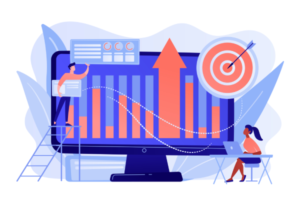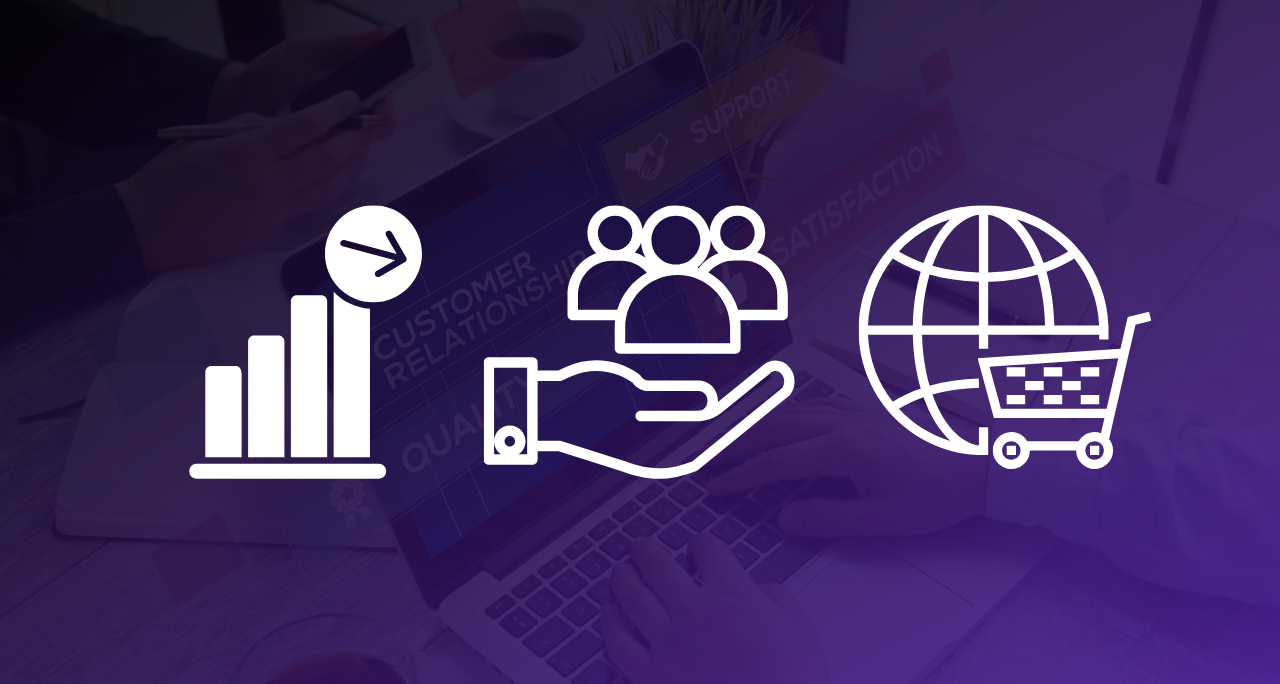The superpower benefits of recurring revenue for an eCommerce business are easy to understand: reliable and predictable cash flow; loyal customers; and freedom to focus on innovation and business growth. But what are the best ways to measure, track, and boost that recurring revenue?
In a recent webinar, “Mastering Recurring Revenue: Tips for Reducing Churn,” Shannon MacLeod, Director of Strategic Growth at Verifone, shared her best retention strategies for recurring revenue, with a comprehensive overview of its foundational definitions and metrics. Shannon also presented tips and tricks on how to increase recurring revenue, presenting tried-and-true strategies that help reduce churn.
Some definitions to keep in mind
Shannon began with some basic terms commonly used in renewal business and useful to keep in mind when strategizing for improved reduced churn and maximized revenue.

Retention rate
Is the percentage of customers you keep, using the formula: Number of subscribers at a specific time / Number of subscribers who originally purchased the product. Renewal rate is the percentage of eligible subscribers you renew, using the formula: Number of active subscribers at the end of the period / Number of active subscribers at the start of the period.
Auto renewal
Means the subscription is automatically renewed at the end of the billing term, with the customer’s payment method stored. Average auto renewal rates are 90% for monthly terms and 80% for annual terms, the latter lower because credit cards are more likely to expire during the longer billing cycle.
Manual renewal
Means the subscription must be manually renewed in a shopping cart at the end of the billing term by the customer; their payment method is not stored. Average manual renewal rates are between 30% and 60%.
Churn
Is the opposite of retention; it’s the percentage of customers lost from total that were originally acquired.
Involuntary churn
Happens when there is a problem with the auto-billing transaction and the subscription expires.
Voluntary churn
Usually happens when a customer on manual renewal chooses not to take action to renew, or when customers cancel their subscription.
Tracking performance of key metrics

Shannon points out that one of the most critical metrics to track is the mix of subscribers on auto renew and those on manual renew as a percentage of your total subscriber base.
She pointed out that having more customers on auto renew means higher total renewal rates, and when they remain steady, a healthy mix is somewhere around 82% on auto renew and 18% on manual renew.
Where your customers are located geographically can also have a significant impact on renewal rates, she pointed out. US renewal rates are consistently higher than rates in Europe, for example.
When looking at renewal rates, it’s important to track the auto renewal rate and the manual renewal rate separately. Shannon emphasized, “If we only track the total renewal rate, we can’t see what’s moving the needle up and down.”
Other factors that influence renewal rates are cancellation and refund rates; upgrades (which have a positive impact); the percentage of successful payment transactions, or authorization rates (which can vary by country, by payment method, and by price point); and both customer lifetime (the average number of months on a subscription) and lifetime value (the dollar amount of that subscription).
A cohort analysis can help you filter by each of these factors to see where to focus your retention efforts, and Shannon goes into some detail about each.
Increasing the number of auto renewal subscribers: 5 tips
The bottom line, Shannon emphasized, is that increasing the number of auto renew subscribers invariably will result in higher renewal rates, and ultimately higher revenue.

How best to do this? Shannon shared her four top strategies:
1. Show your customers the benefits of signing up for (and/or not opting out of) auto renewal for a service or product. Explain to your customer the benefit of flexibility and peace of mind that their service will continue without any effort on their part. Remind them they will know 30 days before their subscription will be renewed, at which point they have the option to back out. This messaging can be transparent from the beginning, even in their shopping cart.
2. Test different styles of opting-in for auto renew choices. Using A/B testing, you can explore which versions of the auto renew opt-in selector work best. She shares an example of a variation that showed a 20% decrease in the number of customers that opted-out of auto renewal.
3. Use migration campaigns to help you encourage manual renew customers to switch to auto renew. The switch can easily be made on the My Account billing page rather than through a shopping cart.
4. Offer a discount for auto renew. You could offer a discount on the next auto renew billing cycle, for instance.
5. Use churn prevention campaigns when customers turn off auto renew. Messaging and offering discount on the billing page can help convince a customer to continue their auto renew status. The annual billing cycle can be discounted in different ways, or the timing of their billing cycle could be changed. Allowing a customer to pause their subscription is another option. Another idea, Shannon says, is to offer a free upgrade if they sign on for a higher-priced premium subscription or downgrading to a lower-priced subscription to convince them to stay.
Increasing the auto renewal rate to reduce involuntary churn: 5 tips
It’s clear that customers on auto renew are the most valuable, showing higher retention rates and improved lifetime value, as Shannon pointed out. Next, she shared her five tips for increasing the auto renewal rate which in turn reduces involuntary churn.

1. Contact subscribers with expired payment methods. “This is the largest driver of involuntary churn,” Shannon pointed out. Email and My Account messaging can remind subscribers to update their payment information if their card has expired.
2. Use a payment provider with advanced retry logic. “This involves multiple authorization attempts at specific intervals and frequencies,” Shannon emphasized. Be aware, however, that too many (or two frequent) attempts can be misinterpreted as fraud. Fees can also be high for multiple tries, so choose your payment provider wisely.
3. Choose a payment provider that has intelligent payment routing. Account Updater obtains updated card information from the banking system so your customers don’t have to manually update their expiry date. Failover payment processors are important, ensuring that payments go through; this can also be helpful when connection or tech issues arise. Geo distribution is also critical, she pointed out, because local payment gateways are known to increase authorization rates.
4. Monitor authorization rates and gateway messages. Shannon urged businesses to track trends and authorization rates, and analyze that data by order type, whether auto versus manual renew, payment method, by country, or by product or price point. Analyze decline messages from the payment gateway for additional insight, she said.
5. Send follow-up emails for failed payments. Customers are often given a grace period of 30 days after the failed payment to renew their subscription. During those 30 days, follow-up emails (tailored to either auto or manual renew) and dunning emails for hard declines should be sent. Personalize the emails so that it’s clear that it’s not a phishing attempt.
Increasing the manual renewal rate to reduce voluntary churn: 5 tips
1. Send renewal reminders early and often. Shannon recommends communicating 30 days before, then 15, 7, and the day of expiration. After that, even more frequent communication is important. Use multiple communication channels (email, My Account, in-product messaging). Be creative with your messaging.
2. Employ various discount strategies. “You can test different discount strategies with a final offer, offering a steeper discount at the end of the grace period, or a steeper discount at the beginning,” Shannon pointed out.
3. Optimize the renewal cart. Use specific messaging for renewal orders. A/B testing how different shopping cart layouts and messaging impacts conversion rates. Display an exit modal when customers leave cart without completing their renewal order.
4. Early renewals. Discounts can be offered if renewal is done early—as much as 3 or 6 months before the subscription expiry date.
5. Extensions allow customers to extend their subscription while renewing. “Add a year and save 50%” Shannon proposes as an example. Extensions like these have been shown to improve retention rate and customer loyalty.
One final tip: the power of winback campaigns
Shannon shares a bonus tip as a final last resort for reducing churn. She recommends contacting all expired subscribers 30 to 90 days after their expiration date, offering a discounted subscription.
It’s clear that recurring revenue is essential for the success of an eCommerce business, as Shannon has clarified in her webinar. Recurring revenue:
a) provides a steady and reliable cash flow;
b) helps guarantee predictability and consistency via loyal customers; and
c) enables businesses to focus on innovation and business
To view the entire webinar with Shannon and learn more, visit our page.






